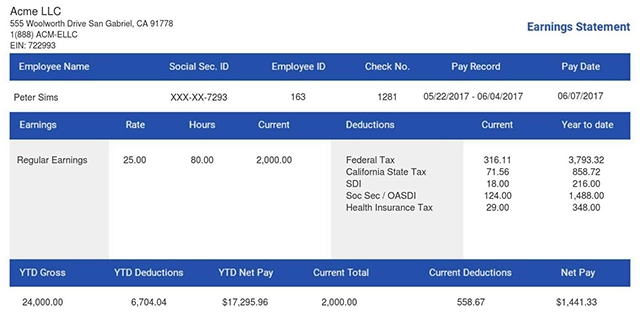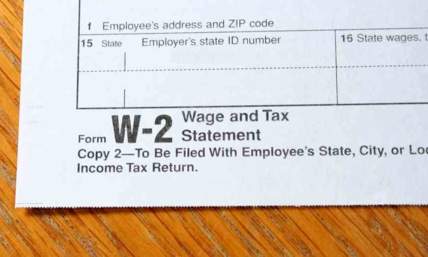Social Security Administration 2025 Updates You Need To Know
The Social Security Administration is going through one of its greatest changes in years. There have been a number of new changes. These include how it deals with overpayments and how beneficiaries get their monthly payments.
Millions of Americans are having a different experience because of the new updates. Some of these changes started to happen in early 2025. The good news is that more will be released later this year.
Why is this important? The SSA affects almost every retiree, person with a disability, and survivor in the country. Changes to the criteria for paying back loans or making direct deposits have a direct effect on household budgets.
The Social Security Administration's January 2025 adjustments have made the news lately. The news implies the intention of the Social Security Administration to send payments of $1999 on average to retirees on May 28.
This article will explain the most important changes to the SSA that you need to know about and how to get ready for them.
Changes in Overpayment Collection
In 2025, one major change by the Social Security Administration focused on overpayments. The SSA altered its policy on March 27 to stop withholding 100% of a recipient's monthly payout. The benefits were held back before because too much debt had been paid off. This meant that SSDI and OASDI beneficiaries might lose their full monthly check until their balance was paid off. People who got SSI still had to pay 10% of their benefits.
SSA Overhauls: Overpayments, Direct Deposit and Email Policies
The move triggered immediate backlash. Lawmakers, advocacy groups, and beneficiaries stressed how losing a whole month’s income can be devastating. Imagine a retiree who relies on their $1990 monthly benefit. Suddenly, they receive $0 due to an overpayment notice from years ago. A lot of stories came up. One family was asked to repay $43,000 over an administrative mistake made nearly two decades prior.
To address the concerns raised, the SSA stated it would now limit future overpayment recoveries to a maximum withholding rate of 50%. This announcement was made on April 25, 2025, and was to begin late July 2025. That means if your monthly benefit is $1,800, the maximum repayment deduction would be $900.
This change still doesn't solve anything. The SSA can recover overpayments anytime. There is no statutory limitation on this. This is why it is necessary for beneficiaries to:
-
Read every SSA notice immediately. Any delays can cost you appeal rights.
-
Request a waiver if repayment causes undue hardship.
-
Negotiate a manageable repayment plan.
The Social Security Administration's January 2025 updates show how easy it is to change policies. Beneficiaries need to stay alert at all times. Even small mistakes in reporting income can lead to repayment requests of thousands of dollars.
Changes To Direct Deposit and Payments
Another huge change is coming by the end of 2025. The SSA is phasing out paper checks entirely. By September 30, 2025, less than 1% of recipients who still get their benefits by mail will have to switch to direct deposit or a Direct Express® debit card.
Here's the reason for the change: The agency argues that electronic payments are faster, more secure, and save taxpayers millions each year. Paper checks are expensive to process. They can also be lost easily and are prone to postal delays and theft.
Below are the three ways beneficiaries can set up or change direct deposits:
-
It can be changed online through beneficiaries' social security accounts.
-
Through their bank’s electronic enrollment system.
-
By calling SSA. Although some actions now require in-person verification, there are some that can be fixed with a phone call.
As part of modernization, SSA identity verification standards are tightening. Starting April 14, 2025, some recipients flagged for additional review must go to a field office with ID documents to make certain updates. This is part of the Social Security Administration identity verification. It is meant to protect against fraud, but it is potentially burdensome for elderly or disabled recipients.
If you’re still receiving paper checks, don’t wait until the deadline; instead, set up direct deposit now. If you’re unbanked, SSA’s Direct Express® card is a safe alternative. This way, you won’t risk interruptions when paper checks disappear forever.
Does the SSA Send Emails?
Many beneficiaries wonder whether or not the Social Security Administration sends emails, as there are a lot of scammers.
The answer is tricky. The SSA sends certain emails, such as alerts when there’s a new message in your social security account. Legitimate agencies won’t contact you by email to ask for personal or banking details. If you get an email that says you owe money, warns that you’ll be arrested, or asks for your Social Security number, ignore it. That message is fraudulent, guaranteed.
It’s frustrating, but scammers have leveled up. There are Social Security emails that plaster the agency’s real logo. Some even disguise themselves using addresses that look genuine. That’s why the SSA makes it clear that they do not request confidential information through email. They send emails or messages through secure portals. If in doubt, call SSA directly or log into your account.
But when SSA gets more people to go online, scammers take the chance to pretend to be the agency. People who get benefits need to be careful not to fall for a hoax. Instead of opening links in emails, save SSA.gov as a bookmark. Also, turn on two-factor authentication for your account.
If an email sounds urgent, menacing, or "too good to be true," it's almost definitely not from the SSA. Alway be careful because it might take years to rectify identity theft linked to your Social Security number.
Social Security Administration Identity Proofing Requirements
Your Social Security account is now the main place to manage your benefits. You can see when payments are due and change your direct deposit information on the account. But in 2025, the SSA made it harder to get into accounts.
The Social Security Administration made it tougher to verify identities as part of modernization. This is what happens if SSA thinks your account is risky or can't authenticate your identity online.
This change is in line with the Social Security Administration's new rules for proving identity that went into effect in January 2025. The idea is to cut down on fraud, which has been getting worse as crooks take advantage of internet networks. However, the obligation to attend in person makes things much harder for older people or people who live in rural areas.
Here are some things you can do to get ready:
-
Make or update your My Social Security account immediately, before the rules get harsher.
-
Make sure that your ID and contact information are up to date.
-
If you can't prove your identification online, call your local SSA office to set up an appointment.
This adjustment is part of a bigger move toward digitalization. The agency is putting money on safe login systems and aims to use Login.gov on all of its sites. These upgrades may be annoying for some, but they are meant to keep your retirement money safe from fraud.
SSA Modernization and What’s Next
The changes in 2025 go beyond direct deposits, overpayments, and identification checks. The January 2025 updates from the SSA looked at a bigger push to modernize the agency under new leadership.
-
AI and automation are two of the changes that have been made. SSA is looking into using AI to make customer service better, cut down on backlogs, and detect fraud.
-
Integration with Login.gov. In the end, all government departments will use one secure login system. This way, they won’t need to remember different usernames and passwords.
-
Policies that put digital first. SSA is urging beneficiaries to go digital. They offer paperless payments and allow account changes only online.
At the same time, people who get benefits are getting bigger checks. For instance, the Social Security Administration sends payments of $1999 on average to retirees on May 28. This is because of yearly COLA changes and the fact that retirement benefits are going up for millions of families.
However, modernization does come with some problems. Critics are worried about accessibility. Many elderly or disabled Americans struggle with online services. Some people worry that automation may lead to errors. This could leave those meant to benefit caught in bureaucratic struggles.
Even still, these modifications show that the SSA is striving to find a balance between security and efficiency. It also keeps up with the times in the digital world. Beneficiaries need to stay up to date to avoid problems.
Final Thoughts
The Social Security Administration is changing swiftly, and these changes are harming the recipients. These changes aren't just news stories; they're real for retirees and families who rely on these benefits every month. The good news is that being aware of what's going on gives you an edge. To avoid last-minute shocks, set up your online account and keep an eye out for developments. Social Security is designed to support you, not confuse you. By staying educated and proactive, you can make sure your benefits continue operating the way they should.
If keeping track of your earnings history feels overwhelming, don’t worry. You don’t have to do it alone. Our Paystub Generator makes it easy to generate accurate, compliant pay stubs in just minutes. Having clear records not only helps you stay organized but also ensures you’re always ready if the Social Security Administration requests proof of income. Stay prepared, avoid surprises, and protect every dollar you’ve earned with us today!















